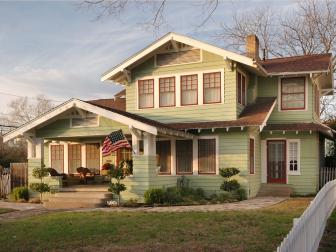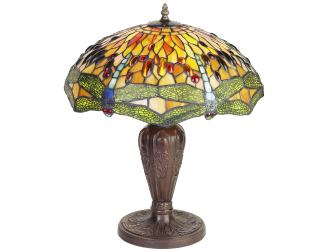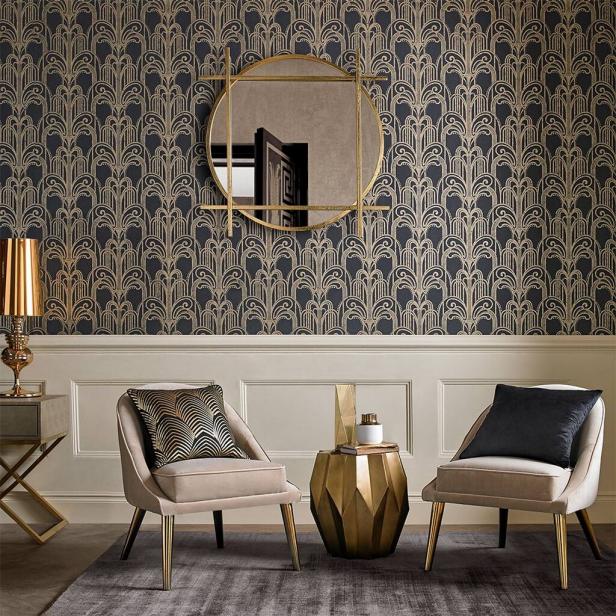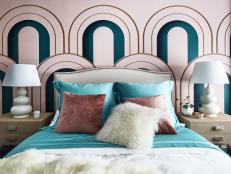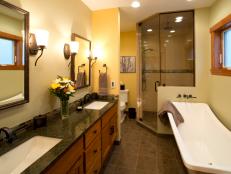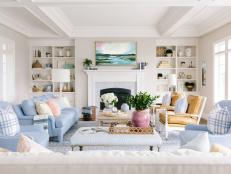Arts & Crafts, Art Nouveau and Art Deco: Which Is Which?
Art Deco style is currently all the rage — and it’s often confused with sound-alike styles. Here’s the history of each of these timeless design styles, and their defining characteristics.

Pop quiz: Can you ID the style shown here, in Radio City Music Hall’s iconic interior?
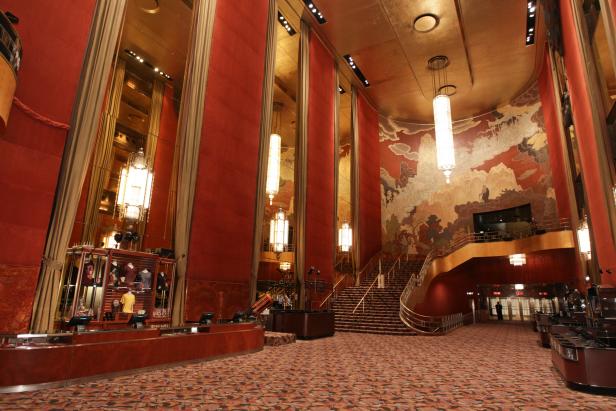
Todd Plitt
A hint: Its decorator, Donald Deskey, attended the International Exhibition of Modern Decorative and Industrial Arts in Paris in 1925. Another: As New York City’s Landmarks Commission explains,
The walls of the living room were of transite, an asbestos compound, and aluminum, while the hall was done in stainless steel and vitrolite. These rooms were among the earliest in the United States to be executed in industrial materials. The use of new materials, such as metals and plastics, combined with innovative uses of traditional materials, is one of the hallmarks of the [style].
The walls between the mirrors are covered in brown suede. This extensive use of mirrors, combined with the unusual wall-covering of suede, is characteristic of the [style].
Here’s one more: When the space opened in December of 1932, the New York Daily News gushed that it was “bigger than big. Handsomer than handsome. It magnifies the magnificent.”
Got it yet? Radio City Music Hall is one of America’s most spectacular examples of Art Deco, from the soaring art in its gathering spaces all the way down to the brass grilles in its restrooms. Keep that image in your mind for a bit as we talk about what Art Deco is not.
20 Art Deco Looks We Love 20 Photos
The distinctive style that infused interiors with glamour and grace in the 1920s is back in the spotlight in the 2020s. Take a design cue from the pros who draw inspiration from history to bring drama and luxury to these modern spaces.
Arts and Crafts (1880s-1920s)
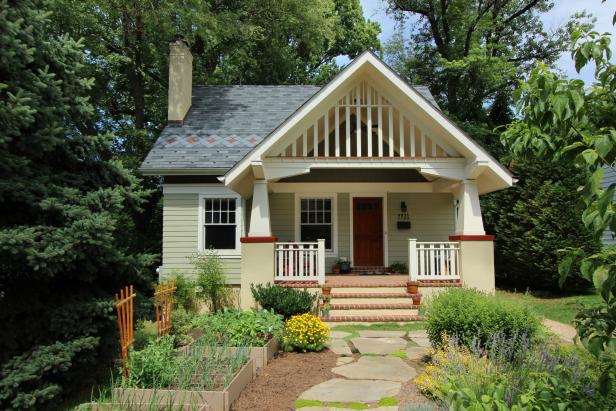
Design and photography by Bennet, Inc, www.bfmarch.com
This richly detailed bungalow exemplifies the Arts and Crafts tradition, a 19th-century movement spearheaded by the influential British designer and activist William Morris. Morris argued that “without dignified, creative human occupation people became disconnected from life,” and he mourned the decline of artisanal traditions (and the rise of ugly and disposable manufactured products that flooded markets in the Industrial Age). The term itself can be traced back to Morris’s friend T.J. Cobden-Sanderson, an English bookbinder and artist who proposed it at an 1887 meeting of what would become the Arts and Crafts Exhibition Society. The Society disdained thoughtless and excessive details (that is, the fripperies associated with Victorian design) and division of labor, which severed the connections between craftspeople and the materials they used.
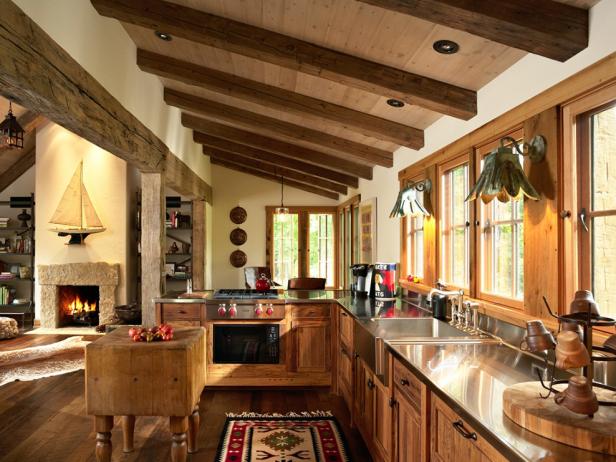
Susan Gilmore; Design By: Jeff Murphy
It stands to reason that Arts and Crafts design has a bit of a medieval feel: Morris and his friends considered the Middle Ages an exemplary era of participatory craft, when even lowly peasants were meaningfully involved in the creation of stunning work. (It’s probably safe to say that executing Arts and Crafts projects in the late 1800s was significantly more enjoyable than toiling to erect a church 500 years earlier, but we take his point about the nastiness of Victorian factory labor.)
Arts and Crafts Architecture
The 19th century Arts and Crafts Movement sparked the Craftsman and bungalow styles.
Art Nouveau (1890s-1910s)
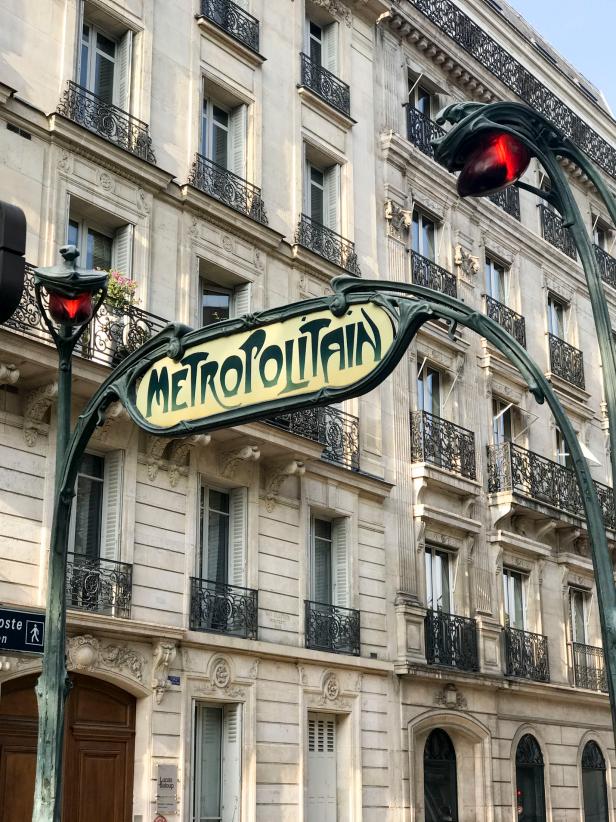
Sam Henderson
Art Nouveau, by contrast, positively revels in sinuous, stylized elements: consider its celebration of ornamentation in the iron-and-glass entrances to the Paris Metro that French architect and designer Hector Guimard developed in 1900. Two years prior, Guimard won acclaim in a citywide design competition aimed at enlivening monotonous city streets: His whiplash-curved creation for the 16th Arrondissement, Le Castel Béranger, is now considered Paris’s first Art Nouveau building. The design movement takes its name from Siegfried Bing’s La Maison Bing – L’Art Nouveau, a Paris gallery Bing opened in 1895 to showcase avant-garde work by artists and decorative designers like Rodin, Rousseau, Tiffany and Toulouse-Lautrec.
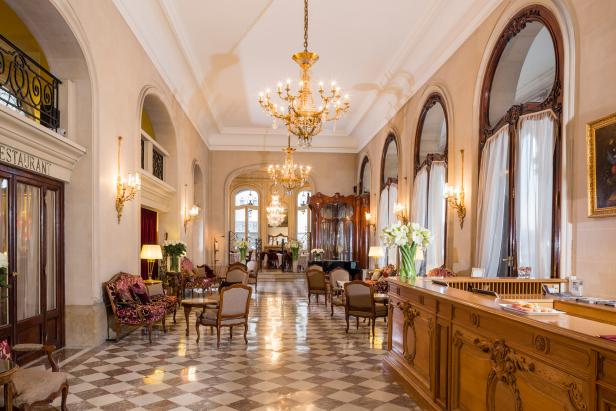
Hotel Regina Paris
Bing was also an avid collector and purveyor of Japanese metalwork, ceramics and woodblock art (which had begun to enjoy popular attention in the mid-19th century, thanks to the development of trade with the West and, among wealthy collectors, to Bing himself); the graceful prints he loved were hugely influential to artists like Alphonse Mucha who worked as commercial illustrators. Thanks to the invention of color lithography in 1879, magazines, illustrations and posters could all deploy feminine, floral, brilliant-hued motifs in the service of separating well-heeled Europeans from their money. (As one would imagine, Art Nouveau’s decorative exuberance lent itself very well to jewelry design, too.)
Tiffany Lamps
Artist Louis Comfort Tiffany will go down in history as the man who made glass magical and created a signature element of Art Nouveau style.
Art Deco (1920s-1930s)
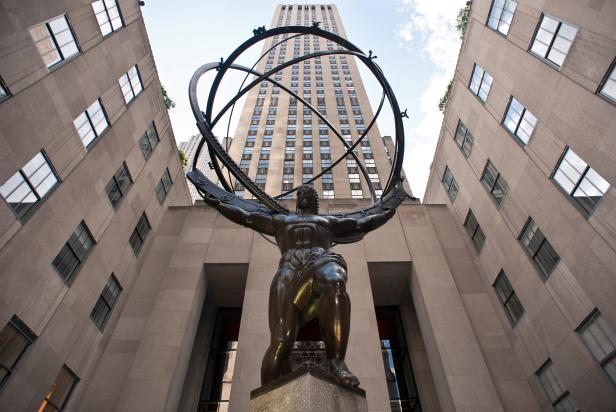
Shutterstock/pio3
There’s no mistaking Lee Lawrie and Rene Chambellan’s Atlas, the four-story, 7-ton bronze statue in Rockefeller Center, for one of Art Nouveau’s nymphs; the chiseled Titan, notably unbowed by the weight of the heavens, is one of the most recognizable examples of Art Deco principles in New York City. Installed in 1937, Atlas is a classical Greek figure stylized and streamlined to reflect his era’s infatuation with geometry and monumental figures. That said, he was a relative latecomer to his era.
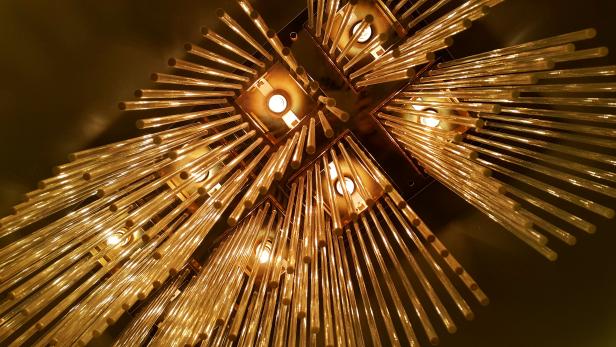
Shutterstock/umarazak
Art Deco succeeded Art Nouveau when it became clear that industrialization and modernism, despite the lovely traditional silhouettes and emphasis on craftsmanship, weren’t going away any time soon. Cubism (the fractured, abstracted avant-garde movement that began with Pablo Picasso and Georges Braque in the early years of the 20th century) also dated Art Nouveau; painters and sculptors were rejecting traditional views of the world, and fresh architectural and interior perspectives gained traction. By the time World War I convulsed the globe, delicate designs and fanciful materials had begun to seem woefully out of step with the new century. In 1925, Paris hosted a massive celebration that war had delayed for nine years: the aforementioned International Exhibition of Modern Decorative and Industrial Arts, an exhibition that earned Art Deco its name (courtesy of Le Corbusier, a famously disgruntled participant who sneered at fellow exhibitors’ embellishments, which he considered superfluous in good design). More than 15,000 participants dazzled an audience of more than 16 million visitors.
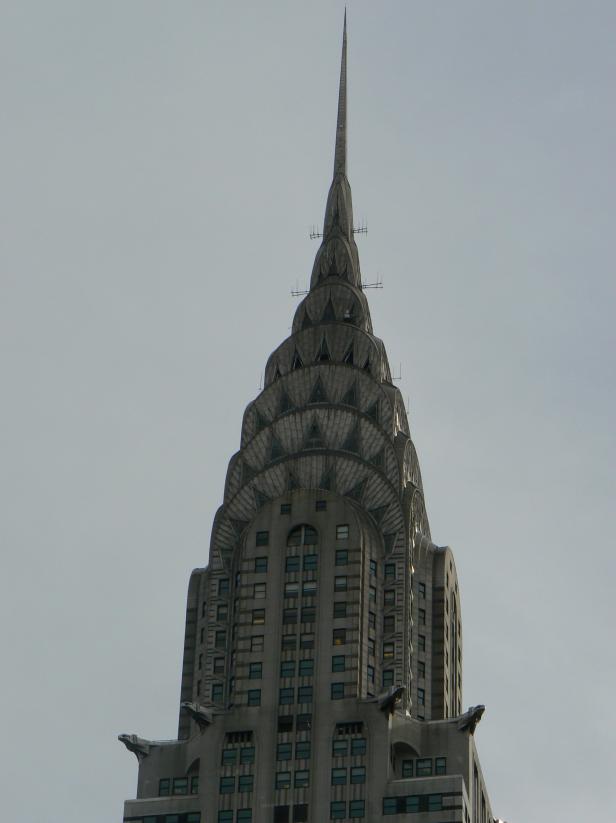
Herbert Hoover, then the United States’ Secretary of Commerce, opposed full American participation in the exhibition; the country, he reasoned, needed to develop its own take in its own time. Instead, a group of domestic aesthetes were sent to observe the offerings in France, then interpret what they’d appreciated for stateside consumers; an understated offshoot of the exhibition then made several stops in America in 1926. Design historians now note that the U.S. version of Art Deco was more streamlined than its Continental counterparts; could that have had something to do with America's limited participation in the grandest coming-out party? That’s a debate for another time; let’s talk about Art Deco’s hallmarks as we understand them. (The Chrysler Building [1930]’s seven layers of crescent setbacks, above, are a classic example of the style’s geometric, utterly urban elan).

Shutterstock/Leonard Zhukovsky
Opened in 1931, Times Square’s Brill Building features several of the Art Deco elements that migrated from Europe to America via the Paris Exposition: stark, polished slabs of black granite flank the entrance, and the graduated ziggurat shape of the facade reflects both contemporary fascination with Egyptian imagery and its developer’s relationship with his late son (featured in the bust above the door).
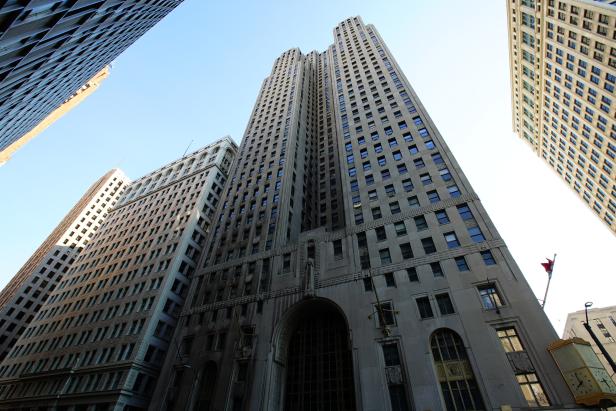
The towering, limestone- and granite-wrapped Penobscot Building in Detroit (1928), in turn, was the eighth-tallest building in the world when it was completed; designed by Wirt Rowland, its intricate carvings and lavish brass decorative elements depict Native American motifs, many of which became part of the style’s lexicon. Exaggerated arches (on the lowest floors) and setbacks (on the highest stories) are also Art Deco calling cards.

Courtesy of The Savoy Hotel London ,
London’s historic Savoy Hotel (which first opened in 1889) celebrates Art Deco in its Beaufort Bar, an opulent space with oversized, gold-leafed arches crowning its booths. Where a space like Paris’s Art Nouveau Hotel Regina (pictured above) features sinuous carved wood with intricate floral motifs, this space in the Savoy boasts Oriental geometry and more simplified lines (consider the graphic rows of panels above each love seat). Sleek pedestal tables flare upward to highly polished tabletops. The black-and-gold carpet has an undulating pattern, but it lacks Art Nouveau's fanciful whiplashes.
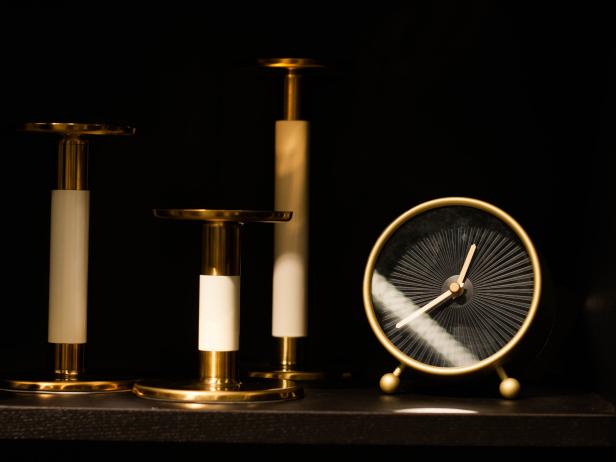
Shutterstock/Ahaltekin4ik
Humbler, even industrial materials also make appearances in first-generation and Art Deco-inspired pieces: innovations of the Machine Age made sleek, fancy-looking decorative items available for mass consumption. Strong geometry and high-gloss surfaces: check and check; the privilege modernists associated with previous modes of craftsmanship: not so much.

BUY IT: Overstock, $440
More than a century after architects and designers used the lens of modern aspirations and technologies to reframe classical themes and silhouettes, Art Deco pieces are finding their way into "new" interiors. This sunburst mirror, now rendered in gold leaf over MDF (a very 21st-century pairing), would look right at home in a Jazz Age sitting room.

BUY IT: Anthropologie, $1,298
This lacquered sideboard, in turn, pairs graphic, semicircular brass hardware with high-contrast black surfaces and a stripped-down silhouette.
Finally, metallic wallpaper is a midtown-Manhattan-worthy stand-in for Radio City's swathes of suede and bespoke murals. As Jay Gatsby put it, "Can't repeat the past? Why of course you can!"

.-Battle-on-the-Beach-courtesy-of-HGTV.-.jpg.rend.hgtvcom.196.196.suffix/1714761529029.jpeg)





